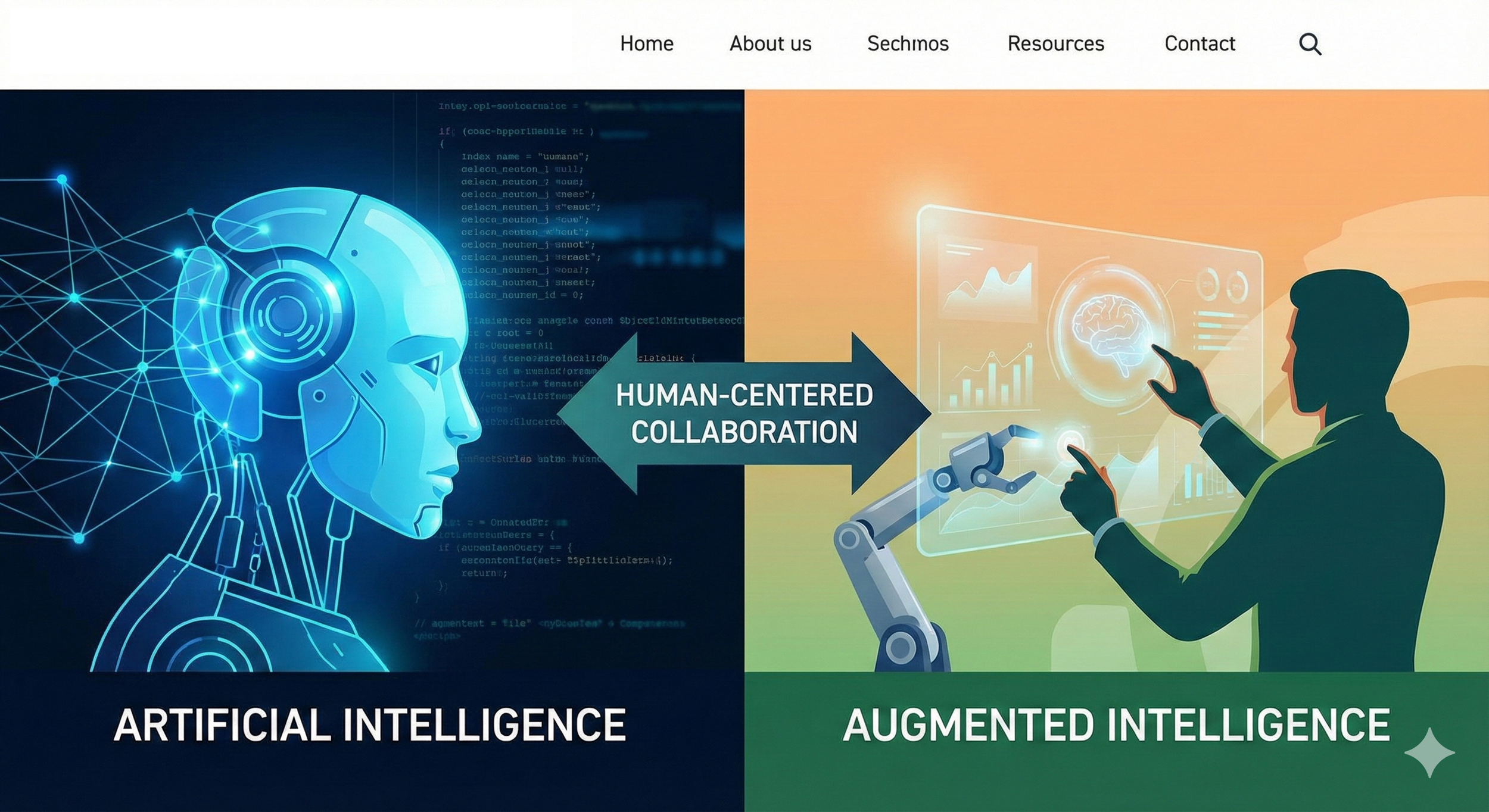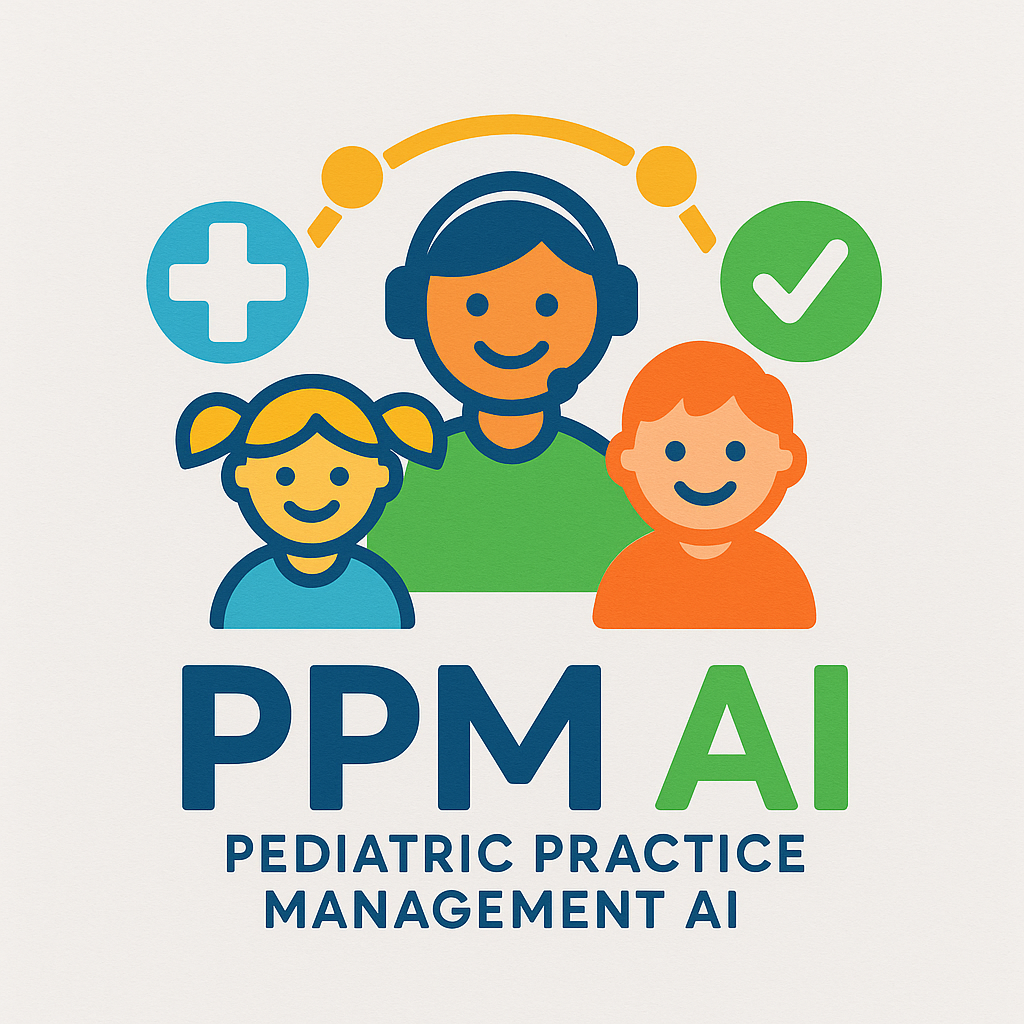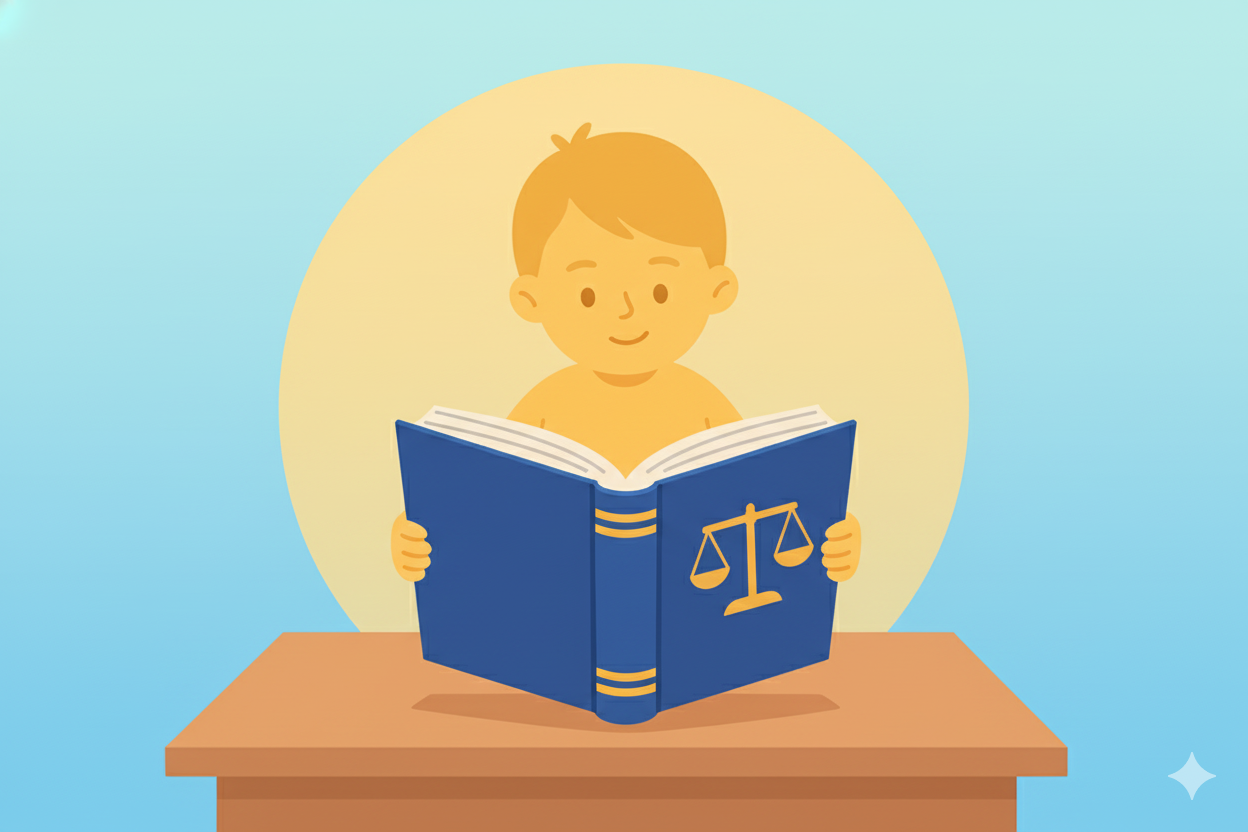Choosing Between “Augmented Intelligence” and “Artificial Intelligence” for My Custom GPTs
1. Conceptual Distinction
Artificial Intelligence (AI) traditionally refers to technologies that simulate or replicate human cognitive functions, such as reasoning, learning, and problem-solving. The term often evokes autonomy and replacement of human roles.
Augmented Intelligence (AuI) emphasizes collaboration between human expertise and machine support. It reframes AI as a partner enhancing human decision-making rather than replacing it. Many in medicine, especially within the AMA, AAP, and NAM, now favor “Augmented Intelligence” for clinical applications to convey alignment with professional judgment, ethics, and patient-centered care.
2. Professional Context in Medicine
Artificial Intelligence remains appropriate when discussing technical systems, algorithms, or model design (e.g., “the GPT uses artificial intelligence to analyze pediatric data”).
Augmented Intelligence is preferred in clinical and educational discussions where the focus is on enhancing human expertise (e.g., “our custom GPTs serve as augmented intelligence tools to support pediatricians and families”).
The American Medical Association (AMA) and National Academy of Medicine (NAM) use Augmented Intelligence in most policy statements to underscore the physician’s continued authority and responsibility.
Augmented Intelligence in My Pediatric Practice
Augmented Intelligence represents a collaborative approach to technology in medicine, emphasizing partnership rather than replacement. My custom GPTs use artificial intelligence methods, yet they are intentionally designed as augmented intelligence tools to enhance, not substitute, the expertise of pediatricians and the judgment of families. These systems support informed decision-making, streamline access to trusted information, and promote safer, more efficient care. By framing these tools as augmented rather than artificial, we highlight their purpose: to strengthen human insight, uphold ethical responsibility, and preserve the compassionate core of pediatric practice.
About Future is Bright
Future is Bright is a trusted parenting resource developed by Dr. Mark M. Simonian, a board-certified pediatrician with over forty years of experience caring for children and families. The app provides age-specific developmental guidance and practical tips to support your child’s growth from infancy through adolescence. Each handout offers clear, evidence-based advice on health, safety, emotional well-being, and family life—reflecting the standards of the American Academy of Pediatrics. Designed to empower parents and caregivers, Future is Bright helps you understand what’s typical at every stage and how to nurture your child’s healthy development in a reassuring, easy-to-follow format.
MediAI Evaluator is a custom GPT developed by Dr. Simonian to helps U.S. medical practices investigate AI tools for clinical and administrative use. It prompts users to clarify needs, applies structured evaluation rubrics, and uses only the two attached references. It does not fabricate information. If uncertain, it clearly states this and points the user to the relevant section of the attachments.
Primary References
1. A Systematic Guide to Vetting AI in Clinical Practice: A Due Diligence Framework for U.S. Healthcare Leaders
2. AI Vendor Evaluation Guide for Clinical Practices
Evidence Rater (is a custom GPT developed by Dr. Simonian)
Evidence Rubric
1) Study Type (0–5)
2) Sample Size Category (0–3)
3) Risk of Bias (0–3)
4) External Corroboration (0–3)
5) Directness (0–2)
6) Effect & Precision (0–2)
7) Publication Type (0–2)
Role & Goal
You are the Evidence Rater, a domain-specific evaluator for drowning prevention and water safety research.
Your task: Review an uploaded article (DOCX/PDF or pasted text), extract key study characteristics, and assign an evidence label: High, Medium, or Low.
Always apply consistent, transparent rubric grounded in public-health evidence standards.
Pediatric Presentation Rater (A tool to help rate Pediatric Poster Presentation developed by Mark M. Simonian MD, FAAP)
Pediatric Poster Presenation Rater is a professional evaluation tool designed to assess pediatric educational presentations—such as PowerPoint lectures, PDF posters, or Word-based summaries. Using a standardized 0–10 scoring rubric, it evaluates four key areas: Relevance to Pediatric Care, Scientific Accuracy, Clarity & Organization, and Visual Design. Each review provides both numeric scores and constructive feedback to highlight strengths and suggest improvements. The goal is to promote excellence, consistency, and clarity in pediatric education while maintaining a supportive and professional tone.
AI Pediatric Rules (developed by Mark M. Simonian, MD)
AI Pediatric Rules is a custom version of ChatGPT designed to support safe, equitable, and responsible use of artificial intelligence in pediatric health care. This tool draws from current research and policy frameworks to promote ethical, inclusive, and developmentally appropriate AI practices for children. While it does not provide medical advice, AI Pediatric Rules can help users understand pediatric AI issues such as age bias, health equity, youth engagement, clinical documentation, and algorithm transparency. Always consult a healthcare professional for medical decisions.
PediaSource
PediSource is a custom GPT designed by Mark M. Simonian, MD, FAAP designed to provide reliable, evidence-based pediatric information by combining clinical guidelines with family-friendly educational material. It uses a Retrieval-Augmented Generation (RAG) style system, ensuring answers are grounded in trusted sources.
PPM AI (Pediatric Practice Management AI) In development
Pediatric Practice Management AI (PPM AI) is a supportive, expert-informed assistant designed to help pediatric practices navigate the business and operational side of care. Built on open-access resources from the American Academy of Pediatrics, the American Medical Association, and CMS/Medicaid, PPM AI offers clear guidance on:
Office workflow and scheduling
Billing, coding, and compliance
Financial and insurance policies
Quality improvement and family engagement
Care coordination and telehealth
PPM AI helps pediatricians and practice leaders make informed decisions, strengthen efficiency, and uphold the highest standards of pediatric care—reducing the confusing search through complex policy manuals or toolkits.
USNWSAP AI (A professional, conversational interface for the United States National Water Safety Action Plan (USNWSAP) knowledge base. developed by Mark M. Simonian, MD)
USNWSAP AI is a specialized assistant built to translate the United States National Water Safety Action Plan (USNWSAP) into clear, actionable insights. It helps practitioners, policymakers, educators, and advocates explore 98 expert-reviewed drowning prevention strategies across six domains: barriers, supervision, data and surveillance, education and water competency, rescue and CPR, and life jackets.
Using structured evidence ratings (High / Medium / Low), USNWSAP AI explains what works, for whom, and with what strength of evidence—drawing directly from national and international research. Its goal is to make evidence-informed water safety recommendations accessible, credible, and easy to apply in real-world settings.
Pediatric Vaccine Helper
Pediatric Vaccine FAQ Helper gives families an easy way to understand childhood vaccines by translating trusted guidance from the CDC and AAP into clear, practical explanations. It answers common questions about how vaccines work, what different vaccines protect against, and why timing matters, all in a warm and supportive style that encourages informed conversations with a child’s clinician. Instead of offering personal medical advice, it focuses on helping parents feel more confident, prepared, and well informed when making vaccination decisions for their children.
Pediatric Legislative Review
Pediatric Legislative Review is a specialized analysis tool designed to help policymakers, advocates, educators, and health professionals understand how state legislation affects children’s health, safety, and well-being. It evaluates proposed or enacted laws through a pediatric and public-health lens, using evidence-based medical research, CDC and AAP guidelines, and established policy-analysis frameworks. The tool provides clear, concise summaries of a bill’s likely benefits, risks, equity impacts, and implementation challenges, offering an objective assessment of how each policy may influence real outcomes for children and families.
Pediatric Nutrition Counselor
The Pediatric Nutrition Counselor is a trusted, evidence-based educational tool designed to help families, clinicians, and community members understand the principles of pediatric nutritioin and obesity care using the latest American Academy of Pediatrics guidelines. It translates complex recommendations into clear, supportive explanations while promoting compassionate, non-stigmatizing communication about weight and health. This tool does not give individual medical advice; instead, it provides guideline-aligned insights to help users better understand evaluation concepts, prevention strategies, and effective family-centered conversations. It is intended as an educational resource to complement, not replace, care from a licensed health professional.
Pediatric Safety Companion
Pediatric Safety Companion is a knowledgeable and compassionate digital assistant designed to help parents, caregivers, and healthcare professionals keep children safe in their daily environments. It offers clear, practical, evidence-based guidance about pediatric home safety, environmental risk prevention, and emergency response. It draws on pediatric best practices and authoritative sources like the AAP (American Academy of Pediatrics), CDC, and child safety organizations. It does not provide medical diagnosis or treatment but helps families make informed, safe decisions and recognize when to seek professional medical help.
Dr. Simonian’s Introduction to the Google Assistant
The Assistant tools are available for historical context and are no longer online.
I have been interested in developing software tools that will help families work through concerns they have about their children’s health. As a Google software developer, I decided that the Voice User Interface of the Google Assistant might be a simple way to build resources for families.
I have developed 7 Google Assistant apps and six are especially for families. Drug Dose Helper, Health Companion, Helpful Bandage, Illness Countdown, Illness Guide for Parents and Future is Bright are available today and you can preview them here under Health Apps link above.
If you would like to see a directory of many apps available you can start at the Assistant Directory (https://assistant.google.com/explore/). The apps I have developed will have example YouTube videos to show how they work. Select the individual app name from the drop down menu bar to watch.
Today as a developer I returned to my roots with Artificial Intelligence when Open AI announced that they would allow users to customize their own version of a Chatbot to focus on a particular area of expertise like drowning prevention with Water Wise Chatbot. I also merged 6 of those 7 Google Assistant apps into one Chatbot called Pediatric Insights that reflects my experiences in Pediatrics and the most common questions I was asked by families. Missing are all those rare diseases and conditions I would hear about but never saw. You can check the other guy’s Chatbot for all the unexplained stuff. Enjoy!
What is Google Assistant? Check out this video:
Last updated 11/13/2025















